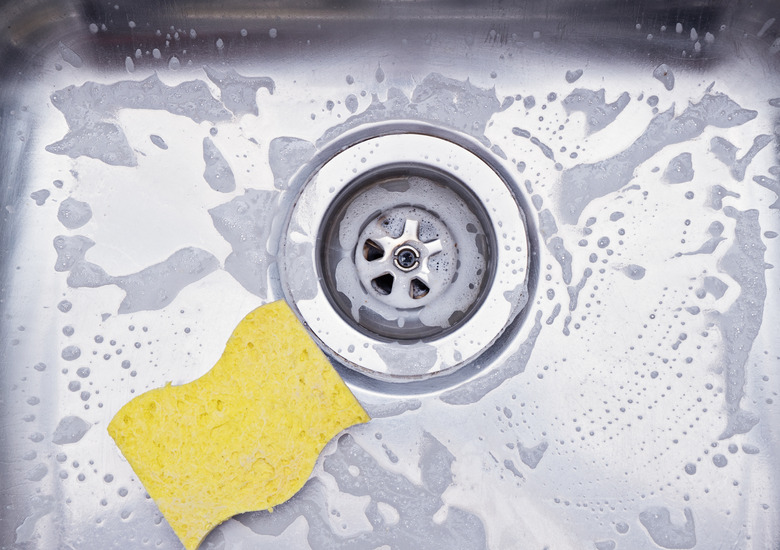How To Clean Drains With Bleach
Are your drains getting a little stinky or slow? Pouring bleach down the drain for smell control seems like a natural choice, but doing it safely is important. Bleach is a toxic chemical that can irritate your eyes, skin and lungs, and can create dangerous reactions with other chemicals. Before reaching for the bleach, understand how it affects your plumbing and your health.
Cleaning Drains vs. Removing Clogs
Cleaning Drains vs. Removing Clogs
There's an important distinction between cleaning drains and removing clogs. Cleaning helps remove a little grime that might accumulate in the pipes. It can prevent more from building up and keep the drains from stinking. Since bleach is a disinfectant, it can help clean out your drains.
But if your drains are clogged, bleach won't help. It doesn't have the power to break up or dissolve things like grease, hair and other gunk that makes up the clogs. When you use Clorox to unclog drains, you're pouring a potentially damaging chemical down the drain for no reason because it won't get things moving.
Potential Problems with Bleach in Drains
Potential Problems with Bleach in Drains
Despite its cleaning power, bleach has some potential negative effects to consider before putting bleach in shower drain or sink plumbing. The corrosive nature of bleach can cause damage to older plastic or lead pipes, as well as rubber gaskets in your garbage disposal.
Combining bleach with any other chemical can cause more damage to both the pipes and your health. Combining bleach with a drain cleaning product can cause a reaction that produces heat, which can damage or burst the pipes. Bleach combined with ammonia or other household cleaners can create a toxic gas that enters your home. It can make you sick and cause breathing difficulties.
If you're using the bleach in a sink, consider the material. Bleach can ruin the patina on a copper sink, for example. Even if you try to pour the bleach directly into the drain, there's a good chance it'll splash onto the sink and potentially damage it.
Bleach Sink Drain Safety
Bleach Sink Drain Safety
Handle bleach with care if you decide to use it to clean your pipes. The chemical can irritate your skin and mucous membranes and cause breathing difficulties. Protect your skin from the bleach to prevent injury.
Open up windows, turn on exhaust fans and otherwise ventilate the room well before using the bleach. Never use bleach before or after using other chemicals or cleaners.
Pour bleach carefully to prevent it from splashing on other items. Bleach can discolor items, so you want to focus it on the drains and not other parts of your bathroom or kitchen.
Avoid using bleach in sink drain or shower drain plumbing too often because of its corrosive nature. Using it too often may slowly cause damage to your pipes.
Septic System Considerations
Septic System Considerations
If your home uses a septic system, bleach in your toilet can cause issues in the tank. Never use bleach to clean or remove a clog in your toilet.
Your septic system relies on good bacteria to break down the waste. If bleach enters the septic system, it can kill off that good bacteria. This can prevent the waste from breaking down, which can clog the tank or prevent it from draining the way it's designed to do.
Cleaning the Drains
Cleaning the Drains
Diluted bleach helps clean the drains while minimizing the corrosive nature of the chemical. One way to do this is to close the drain and pour 1/2 cup of bleach with 1 gallon of water in the tub or sink. Open the drain to let the diluted bleach go down into the pipes.
Avoid using this method on copper sinks or other sinks with material that may be damaged by bleach. Always rinse your bathtub or sink after using bleach in the drains to remove any remnants of the chemical.
